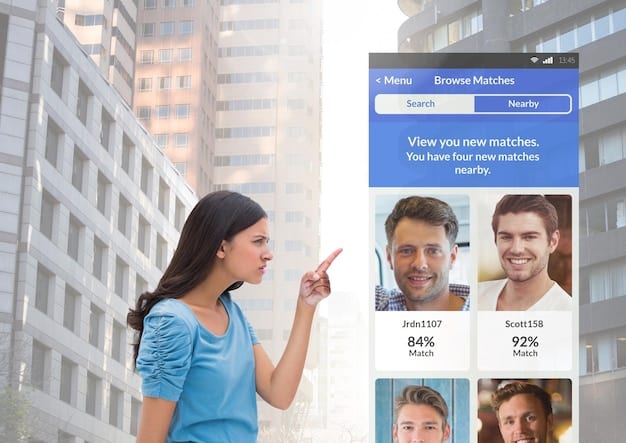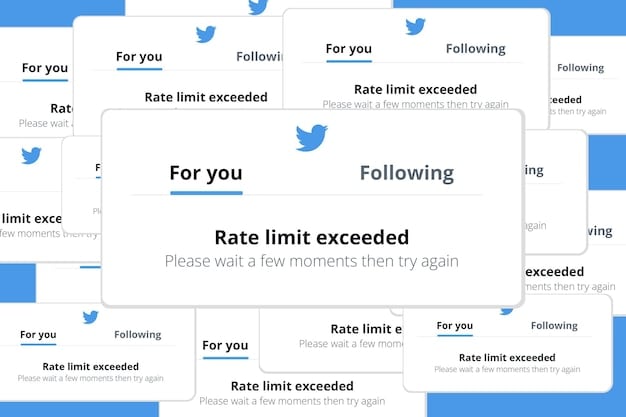MLS & Social Media: Which Platforms Dominate Engagement?

MLS and Social Media: Which Platforms Are Driving the Most Engagement? Unveiling the top social media platforms where MLS teams and fans connect, exploring engagement metrics, content strategies, and future trends in the digital landscape of Major League Soccer.
The intersection of sports and social media has revolutionized fan engagement, and Major League Soccer (MLS) is no exception. Understanding MLS and Social Media: Which Platforms Are Driving the Most Engagement? is crucial for teams, marketers, and fans alike to stay connected and informed.
The Rise of Social Media in MLS
Social media has become an indispensable tool for sports leagues worldwide, and MLS has embraced it wholeheartedly. These platforms offer direct lines of communication between teams, players, and fans, fostering a sense of community and excitement. The digital realm extends the game beyond the 90 minutes on the field, offering continuous engagement.
The Evolution of Fan Engagement
Historically, fan engagement was limited to attending games and watching broadcasts. Today, social media allows fans to interact with their favorite teams and players in real-time. This shift has created new opportunities for teams to build relationships and monetize their fan base.
MLS’s Digital Transformation
MLS recognized the potential of social media early on and invested in building a strong digital presence. By tailoring content to specific platforms, MLS has successfully attracted a younger demographic and increased the league’s global reach.
- Enhanced fan experience through interactive content.
- Increased brand awareness and reach.
- Improved communication between teams and fans.
- Opportunities for data collection and analytics.
In conclusion, MLS’s embrace of social media represents a significant shift in how sports leagues engage with fans, offering unprecedented opportunities for connection and growth.
Facebook: A Foundation for MLS Engagement
Facebook remains a cornerstone of social media strategy for many MLS teams. Its large and diverse user base makes it an ideal platform for reaching a wide audience and building brand awareness. Through a mix of content formats, MLS teams leverage Facebook to keep fans informed and entertained.
Content Strategies on Facebook
MLS teams utilize Facebook for a variety of content types, including game highlights, behind-the-scenes footage, player interviews, and team news. The platform’s algorithm allows teams to target specific demographics, ensuring that content reaches the most relevant fans.
Measuring Engagement on Facebook
Engagement on Facebook is typically measured by metrics such as likes, comments, shares, and video views. These metrics provide insights into the types of content that resonate most with fans, allowing teams to refine their strategies over time.

- Live game updates and scores.
- Exclusive player content and interviews.
- Fan polls and quizzes.
- Promotions and ticket giveaways.
In summary, Facebook serves as a foundational platform for MLS teams to connect with fans, share content, and build brand loyalty through consistent engagement and targeted content strategies.
Instagram: Visual Storytelling in MLS
Instagram’s visual nature makes it a perfect platform for MLS teams to showcase the excitement and energy of the game. Through high-quality photos and videos, teams can tell compelling stories and create a strong emotional connection with fans. This platform is particularly effective for reaching younger, visually oriented audiences.
The Power of Visual Content
Instagram emphasizes visual content, making it ideal for showcasing game highlights, player portraits, and behind-the-scenes glimpses. High-quality imagery and engaging video content can capture the attention of fans and drive engagement.
Utilizing Instagram Stories and Reels
Instagram Stories and Reels offer additional opportunities for MLS teams to connect with fans in real-time. These formats allow for more spontaneous and interactive content, such as live Q&A sessions with players, training footage, and fan-generated content.
MLS teams leverage Instagram through:
- High-definition action shots from games.
- Behind-the-scenes videos of training sessions.
- Player takeovers of the team’s account.
- Interactive polls and quizzes in stories.
In conclusion, Instagram’s focus on visual content makes it a powerful tool for MLS teams to engage fans, tell compelling stories, and build a strong brand identity through visually appealing and interactive posts.
Twitter: Real-Time Updates and Fan Interaction
Twitter’s real-time nature makes it an essential platform for MLS teams to share breaking news, provide live game updates, and engage in direct conversations with fans. Its concise format encourages quick and relevant interactions, fostering a sense of immediacy and involvement.
Live Game Coverage
Twitter is the go-to platform for live game coverage, with teams posting real-time updates, scores, and highlights. This immediacy keeps fans engaged and informed, even if they can’t watch the game live.
Engaging with Fans and Influencers
MLS teams use Twitter to engage directly with fans, answering questions, responding to comments, and running contests. They also collaborate with influencers to amplify their message and reach a wider audience.

- Breaking news and team announcements.
- Live game updates and scores.
- Fan Q&A sessions with players and coaches.
- Retweeting and engaging with fan content.
In short, Twitter’s real-time capabilities make it an indispensable platform for MLS teams to deliver live updates, interact with fans, and foster a dynamic and engaged online community.
TikTok: Reaching a Younger Audience
TikTok’s short-form video format has made it a popular platform for reaching younger audiences, and MLS teams are increasingly leveraging it to engage with this demographic. Through creative and entertaining content, teams can introduce the sport to new fans and build a loyal following.
Short-Form Video Strategies
TikTok’s emphasis on short-form video requires MLS teams to create content that is concise, engaging, and visually appealing. This may include highlights, player interviews, and behind-the-scenes glimpses, all tailored to the platform’s unique audience.
Challenges and Trends
MLS teams participate in trending challenges and create their own to engage with fans and increase their visibility on the platform. These challenges often involve players, mascots, and fans, creating a sense of fun and community.
Teams use TikTok for:
- Highlight reels of goals and key plays.
- Funny and engaging player interviews.
- Behind-the-scenes glimpses of team activities.
- Participation in trending TikTok challenges.
To summarize, TikTok’s short-form video format offers MLS teams a unique opportunity to connect with younger audiences, introduce the sport to new fans, and build a loyal following through creative and engaging content.
YouTube: Long-Form Content and Behind-the-Scenes Access
YouTube provides MLS teams the platform for longer-form content, allowing for deeper storytelling and behind-the-scenes access. Through documentaries, interviews, and highlight packages, teams can offer fans a more comprehensive view of the sport and its players. This platform is ideal for building a strong and loyal fan base.
Producing High-Quality Video Content
YouTube requires high-quality video content that is engaging, informative, and visually appealing. MLS teams invest in professional production to create content that resonates with fans and showcases the league in a positive light.
Building a Community on YouTube
MLS teams use YouTube to build a community by interacting with fans in the comments section, hosting live streams, and creating content that encourages participation. This fosters a sense of belonging and encourages fans to return to the channel regularly.
Generally, MLS teams upload following:
- Full match replays and highlights.
- Player interviews and documentaries.
- Behind-the-scenes footage of training sessions.
- Content which is interactive in nature.
In conclusion, YouTube offers MLS teams a platform to create longer-form content, provide behind-the-scenes access, and build a strong community of loyal fans through high-quality video production and interactive engagement.
| Key Point | Brief Description |
|---|---|
| Great for reaching a broad audience with diverse content. | |
| Ideal for visual storytelling and engaging younger fans. | |
| Perfect for real-time updates and direct fan interaction. | |
| 🎵 TikTok | Engaging younger demographics with short-form video content. |
Frequently Asked Questions
▼
Facebook remains widely used due to its large and diverse user base, though younger fans are increasingly active on Instagram and TikTok.
▼
Teams share game highlights, player interviews, behind-the-scenes content, and run interactive polls and contests to boost interaction.
▼
Visually appealing content, like high-quality photos and short, engaging videos, tends to generate the most views, likes, and shares.
▼
Key metrics include likes, comments, shares, video views, and follower growth, offering insights into content effectiveness.
▼
Expect greater personalization, augmented reality experiences, and deeper integration of e-commerce and social platforms.
Conclusion
In summary, MLS teams utilize a variety of social media platforms to engage with fans, share content, and build brand loyalty. Each platform offers unique advantages, and teams tailor their strategies to maximize reach and engagement across the board.





